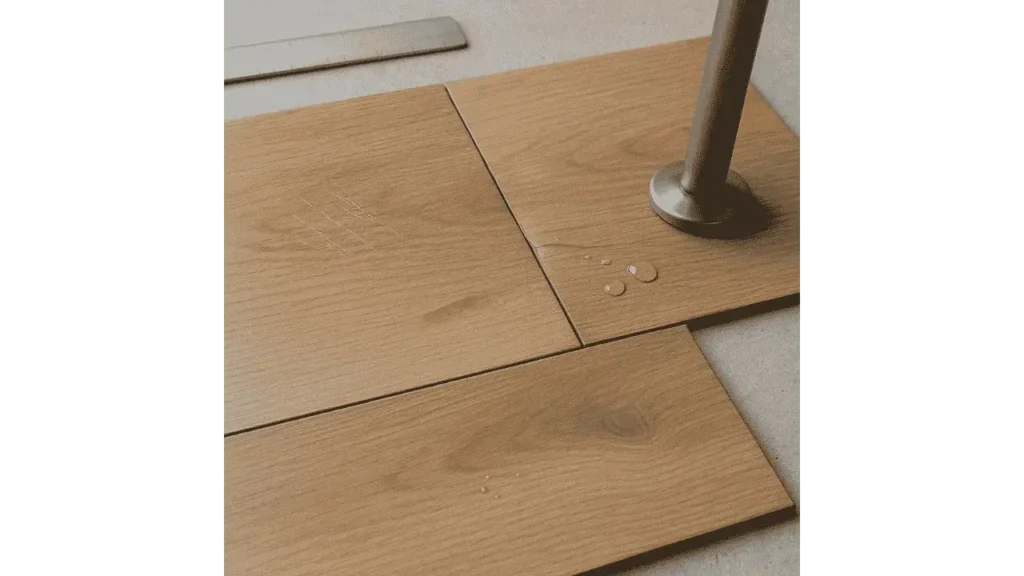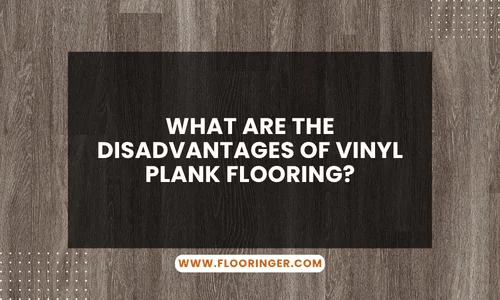While vinyl plank flooring is often praised for its affordability, ease of installation, and water resistance, it is far from a perfect solution. For homeowners evaluating flooring options, understanding the full scope of its drawbacks is just as important as recognizing its strengths. Speaking as someone who has overseen dozens of residential flooring projects, I’ve seen vinyl flooring disappoint homeowners who didn’t anticipate its limitations. Below is an expert breakdown of its most critical disadvantages and what they might mean for your space in the long run.

Why Repairability Is a Concern?
One of the most significant downsides of vinyl plank flooring is that it cannot be repaired once damaged. If a plank is scratched, torn, or deeply dented, there’s no option to sand it down or patch it up like you might with hardwood or tile. The only solution is to replace the damaged plank entirely, and in many cases, that’s easier said than done, especially if the original flooring pattern is no longer in stock. This makes vinyl a less desirable option for high-traffic homes, pet owners, or households that frequently rearrange furniture.
“Unlike natural wood, vinyl doesn’t allow for spot refinishing. Once the top layer is compromised, aesthetics and function both decline,” says Angela Matthews, lead flooring consultant at Precision Surfaces Group.
Long-Term Replacement Costs Add Up
Although vinyl is inexpensive upfront, the cumulative replacement costs over time can be higher than you expect. Small blemishes that would otherwise be refinished in wood may result in full-panel replacements in vinyl. In multi-room installations, this can lead to a costly domino effect during upgrades or renovations.
Are VOC Emissions Still a Risk?
Yes. Many types of vinyl plank flooring can emit volatile organic compounds (VOCs), chemicals that release into the air after installation. VOCs can cause respiratory irritation, especially for people with asthma or allergies. Although low-VOC options do exist and certifications like FloorScore can help guide safer choices, not all vinyl on the market meets these standards.
“The concern with VOCs isn’t just about short-term odor; it’s about long-term indoor air quality, especially in poorly ventilated spaces,” warns Dr. Colin Reyna, environmental toxicologist and advisor at Healthy Home Science Institute.
Is It Difficult to Remove?
When adhesive is used during installation, vinyl becomes challenging to remove cleanly. Glue-down planks are highly durable but are labor-intensive to lift. If adhesive residue remains, it often requires mechanical scraping or chemical treatments to clean the subfloor, adding to your renovation time and budget.
On the other hand, floating vinyl floors offer easier removal but may lack the stability of glued-down options. You’re essentially choosing between convenience at removal or stability during use.
Environmental Drawbacks You Should Know
From an eco-standpoint, vinyl flooring is far from ideal. It is produced using PVC (polyvinyl chloride), which is a synthetic plastic that is not biodegradable. Recycling is also problematic, as most vinyl flooring cannot be reprocessed easily. Disposal at the end of its lifespan contributes to landfill waste, and manufacturing itself often involves chemical by-products that can harm ecosystems.
Does Brand Make a Difference?
Yes, to a point. Some higher-end vinyl flooring brands now offer products with improved durability, realistic textures, and better VOC ratings. Select manufacturers have started integrating partially recycled content or offering take-back programs, which aim to reduce the product’s environmental impact.
Learn More: How to Stop Your Vinyl Plank Flooring from Buckling?
Still, even the best vinyl floors can’t escape the limitations of their core material. They may perform better in terms of wear resistance and warranty coverage, but they will never match the repairability, longevity, or recyclability of natural materials like hardwood or bamboo.
Final Takeaways
Vinyl plank flooring may be cost-effective and attractive, but it comes with several key drawbacks: lack of repairability, VOC emissions, environmental concerns, and challenges with removal. While premium brands can help mitigate some of these issues, they don’t eliminate them entirely. Homeowners should weigh these factors carefully, especially if durability, health, or sustainability are high priorities. In many cases, investing a bit more upfront in a different material can save money and headaches down the line.
